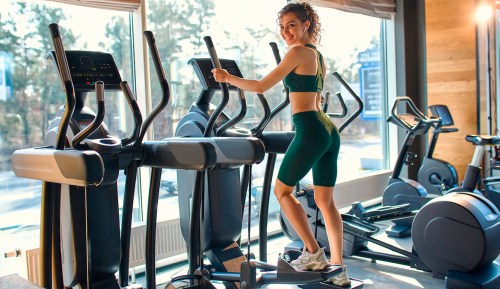When your IT band is tight (spoiler alert: it is!) here’s what to do
One of the tightest areas of your body is this certain connective tissue in your legs. Here, experts explain what is the IT band and how to stretch it.

The very first time I got professionally stretched, my stretch expert was working on my legs when she pointed out that my IT bands were incredibly tight. “What types of workouts do you do?” she asked me, to which I responded that I’m an avid runner, who’s always had an affinity for intense boot camps. It’s basically a recipe for tight quads, hammies, and yep, IT bands.
“The IT band is a tendinous band that begins laterally above the hip and inserts below the knee,” says Sarah James, a certified Pilates pro and founder of Pilates by Sarah James. “It supports extension of the hip and laterally stabilizes the patellofemoral joint of the knee. People are using it all the time.” Kara Levine, director of Pilates at New York’s Flex Studios, adds that it runs down the outside of the thigh to the tibia (AKA your shin bone).
Even if you’re not thudding on the cement in an outdoor jaunt, you’re using your IT band simply while standing still. “When standing still, the IT band maintains knee and hip extension,” says James. “When walking or running the IT band helps maintain flexion of the hip and is a major supporter of the knee—up to about 30 degrees of knee flexion.” So yeah, it’s pretty much always being utilized in some way or another if you’re upright.
Even if you’re not thudding on the cement in an outdoor jaunt, you’re using your IT band while standing still.
“When people feel IT band pain—which is usually pain in the outside of the knee—it’s often due to improper alignment when exercising,” says Levine, who points out that this is why fitness instructors always say to keep your knees lined up over your toes. “It’s also due to imbalances in the muscles surrounding the IT band, or inflammation. Inflammation occurs from overuse and is often present in athletes that continuously flex their knees like runners or cyclists. This causes the IT band to continuously rub against the bone, causing inflammation.” James says that pathomechanics of the foot can also lead to tightness (which means the bones aren’t in proper alignment).
Since it’s not actually a muscle (rather, a tendon), there’s a lot of confusion as to how to stretch it properly…or if you even can. “You can’t actually stretch the IT band itself,” says Levine. “The best way to avoid a painful IT band is to be mindful of overuse when exercising, making sure you always have proper form, and do workouts like Pilates that strengthen muscles evenly so you don’t create imbalances. If you experience pain in the outer leg that you suspect is IT band related, it’s important to rest and stretch the surrounding muscles in your hips, legs, and lower back to help find relief.”
Also, a painful IT band may not always be caused by tightness. “If so, stretching won’t alleviate the discomfort,” says James, who explains that the pain could actually be a symptom of weak hip muscles or foot mechanics. “So if you stretch the IT band without addressing the true cause of the discomfort, you’ll only get temporary relief at best,” she says. “You must determine the cause of the IT band pain, and then go from there.”
That said, Levine has two key stretches you can do to help loosen up the muscles surrounding the IT band. One is the roll down, which involves standing up straight with one leg crossed behind the other and your feet close together. “Nod your chin to your chest and roll down over your thighs towards the floor as far as you can,” she says. “Hold for 30 seconds and repeat on the other side.” Then there’s the figure four: “Lie down flat on your back, bending your knees and placing your feet flat on the floor,” she says. “Cross your right ankle over your left knee and gently pull your left thigh in towards your chest until you feel a stretch. Hold for 30 seconds and repeat on the other side.”
Besides these stretches, you can incorporate devices to help your IT band feel more pliable. “Foam rollers, lacrosse balls, and self-massaging devices like the Hyperice Hypervolt ($349) and The Stick work very well to loosen up the [muscles surrounding the] IT band,” says James. Whatever you do, though, don’t ignore a tight IT band—it’s really key for your own mobility.
Also key are these stretches that relieve lower back pain. And here’s how to stretch your calves, which is sneakily hard.










